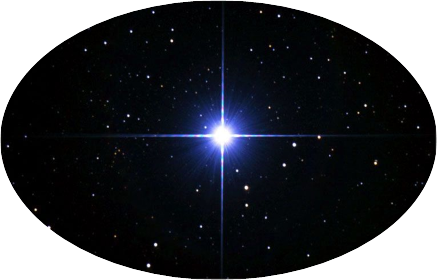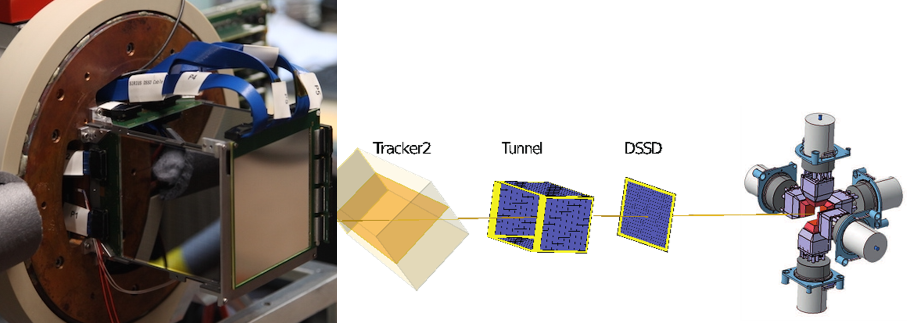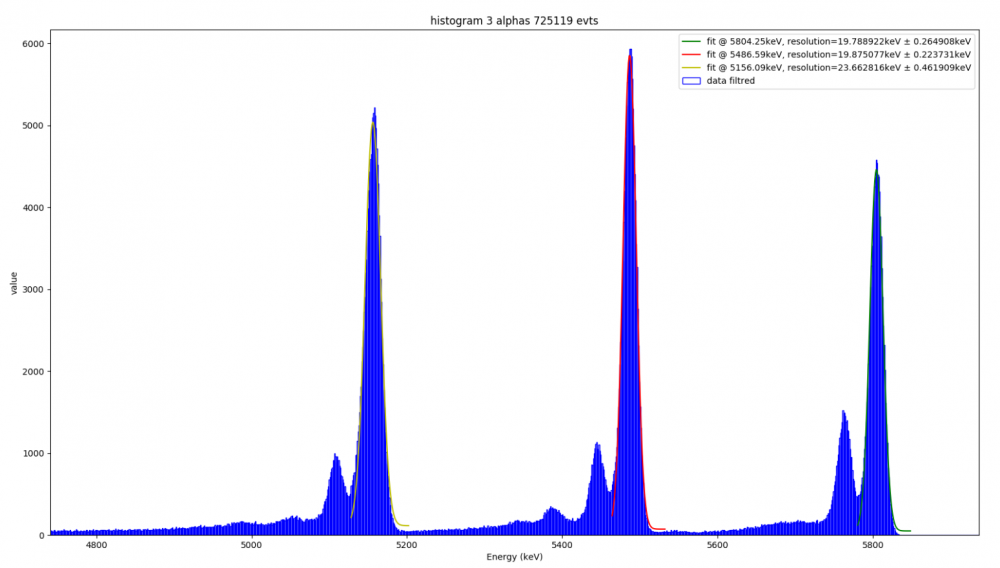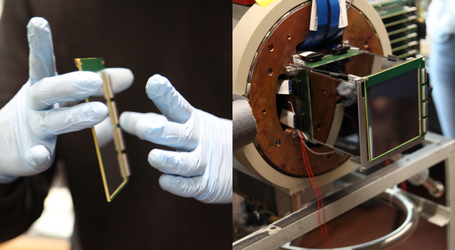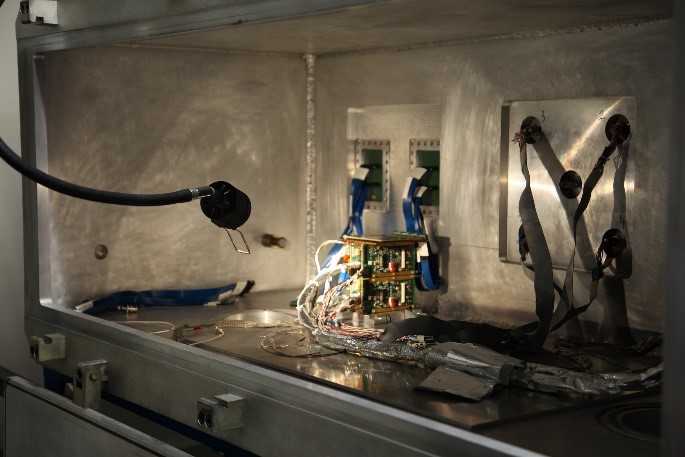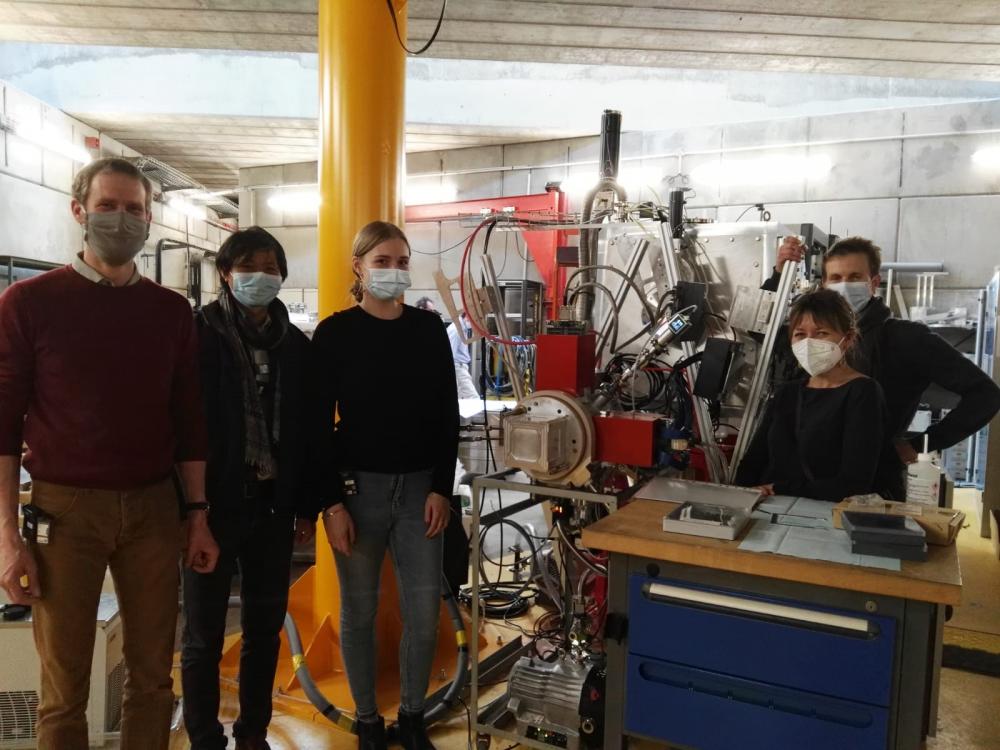The ancients understood that heroes, like Orion with Sirius, need their faithful companion. IRFU engineers and physicists and their collaborators are no exception to the rule and have just completed the development of a modern Sirius, a key element of the super spectrometer separator (S3) under construction at GANIL. The tests having been successful and the system has been moved to GANIL for its final installation.
In Greek mythology, Sirius, Orion's faithful four-legged companion, an outstanding hunter, was transformed into a constellation and placed at his side. This famous canid also gave its name to the brightest star in the night sky. IRFU physicists have just honoured him in their own way, this time in the world of detectors.
Indeed, the Sirius of IRFU and its partners is an instrument composed of a set of complementary detectors. It will be located at the focal plane of the S3 spectrometer of the Spiral2 project at the Large Linear Ion Accelerator (GANIL) and will play an important role in future nuclear physics experiments.
At GANIL, in the coming years, the LINAG linear accelerator will provide a stable heavy ion beam of unprecedented intensity. By colliding this beam with targets at the S3 spectrometer, physicists will be able to study rare nuclei of sometimes very exotic elements, as well as low probability reaction mechanisms at the limits of nuclear stability.
One of the main objectives is to study the so-called superheavy nuclei (nuclei composed of more than 102 protons and 150 neutrons). Through these studies, physicists hope to finally provide crucial information on whether superheavy elements can be produced by stars (for example, during the fusion of neutron stars, a phenomenon recently observed via gravitational waves). On Spiral2, these nuclei can be produced in large quantities by fusion-evaporation reactions. Selected by the S3 spectrometer, they can be studied in particular by measuring their radioactive decay.
To discover the secrets of these superheavy nuclei, IRFU physicists and their collaborators have been working on the Sirius project (Spectroscopy and Identification of Rare Isotopes using S3). Its objective is to develop and operate a detection system that will be installed at the focal plane of S3 and will allow the measurement of the decays of very exotic nuclei (containing more than 102 protons) by alpha, gamma, proton or electron emission on the one hand, or by fission on the other hand, and thus to carry out detailed high-resolution spectroscopy of these nuclei.
Sirius consists of a double-sided silicon detector (DSSD) composed of 256 strips distributed over an area of 10 cm by 10 cm (Figure 3), which measures the implantation of ions and the particles emitted by their decay. As shown in figure 1, the DSSD is surranded by so-called "tunnel" detectors that will measure the particles escaping from the implantation detector (DSSD). The ensemble is itself surrounded by Exogam detectors dedicated to gamma-ray spectroscopy. Upstream of Sirius, a detector, known as Tracker detector composed of emissive foils, will measure the trajectory of the incident ions as well as their time of flight.
Sirius is the result of a close collaboration between several laboratories (IPHC, GANIL, IJCLAB, CEA/IRFU). Each part of the detector was designed separately, then sent to IRFU/DEDIP for assembly and testing (Figure 4), both at the mechanical and electronic levels. IRFU was also responsible for the development of the DSSD electronic chain and the acquisition system, including the development of appropriate firmware. The performances obtained are perfectly in accordance with the specifications requested by the physicists. An example of the energy resolution of the DSSD detector with its associated electronics is shown in figure 2. A new innovative concept of front-end electronics has been developed. It allows to finely measure both the energy of the large signals linked to the implantation of ions in the DSSD and the very weak signals, which can be very close in time, associated with the decay phenomenon. This new device will be essential for studying and discovering new superheavy elements at GANIL.
On March 23, 2021, after having checked the perfect operation of the detector, our teams successfully moved Sirius to GANIL (see figure 5). It will then be installed next to the S3 spectrometer and we hope it will have a future as bright as the star with which it shares its name.
Contacts: Thomas Chaminade, Barbara Sulignano
• Innovation for detection systems › Detectors for both infinite physics Structure of nuclear matter › Atomic nucleus
• The Electronics, Detectors and Computing Division • The Nuclear Physics Division • The Systems Engineering Division
• LENA group - Structure of the Atomic Nuclei • Instrumental electronics laboratory (LEI)
• SIRIUS



